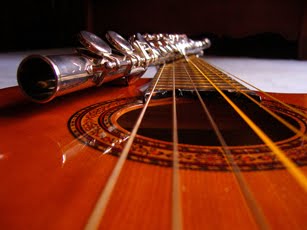
The chill of the air, the sound of children’s carols and chimes, the smell of native food and the blast of firecrackers bring me back to my childhood days. Well, almost, I don’t hear bamboo cannons anymore. No -- sadly, I don’t get to fire them anymore!
It was a rather tedious process. You first had to warm up the bamboo – oh, sorry, you first had to get a piece of bamboo about twice your height (which means about 5 to 6 feet since I was only 10 years old then) and smoothen its surface with a sharp knife or a bolo. You sawed off one side so that you had one closed node left and the rest of the nodes you punched out with a long steel bar to come up with, well, a hollowed cannon.
Near the closed end, you chopped off enough bamboo skin to form an oval depression (this was where you pressed your lips while blowing air into the cannon) and, at the center of it, you carved out a small hole using a bar of steel heated over a fire (we didn’t have a drill then, I guess). Once the hole was finished, it was best to reinforce the same end by tying around two pieces of wire on each side of the firing hole. Much of the pressure during the explosion would be at this end and the wire support assured you of a durable cannon.
Any straight bamboo type -- at least three inches in diameter -- will do for this project. Oftentimes, we made do with what our father brought home or what my older brothers were able to get in the neighbourhood. The strong and loud cannons were those of mature bamboo and of such species that were thicker and wider, the ones available in the provinces. (Today, the shorter, seemingly harmless ones made of welded aluminium cans or PVC pipes can rock a whole house. I heard they have been banned.) For our purposes, we just needed any bamboo that could create enough noise and fire tin cans twenty to thirty paces away. As kids, anything more powerful would have been dangerous. If we had two cannons, we fought against each other, firing cans back and forth until they became deformed. (Nobody got hurt as cans were so easy to dodge or catch.) With one cannon, we contented ourselves with making as loud an explosion as possible, with or without cans. The loudest it could go was less than that of a one-inch wide triangulo (triangle firecracker). But for us, the noise was merely the clapping after the whole performance. Seeing a can fly through the white ring-shaped smoke emitting from the cannon’s mouth and land across the vegetable patch was sheer triumphant joy. Projectile motion was a child’s delightful experience before it became a formidable Physics exam-problem in high school.
Oh, I almost forgot -- how did we fire the cannon?
After pouring a handful of kerosene (rubbing alcohol and gasoline were expensive; of course, the ancient Chinese, who must have taught us the use of cannons, used gunpowder) through the hole, you had to prop up the firing-end over a lighted candle or kerosene lamp to warm it up. A cold cannon will not fire since the kerosene needed to reach a certain temperature to produce enough heated vapor inside the cannon. To keep the cannon warm, it was best to keep glowing charcoal beneath the firing-end where the kerosene pooled. We made sure fire did not rise up from the coals and scorch the cannon. We lost a cannon once that way. (Wrapping the bamboo’s bottom with tin sheet prevented that.) Once it heated up, you positioned the cannon with its open-end raised and supported a bit higher than the firing- end. You fired the charge with a wicker made of a thin bamboo stick dipped in kerosene before being lighted.
At first, you heard a sudden rush of air coming from the closed end to the open end – like the sound of a car’s exhaust pipe when it back-fires but a much softer and soothing sound. I know what it is -- it’s like the bamboo singing a bass tone lower than any tuba player can make and more full in timbre. Whooofff! -- it went. And together with that sound was smoke spouting through the firing hole and the mouth. At night, you could even see the red flame from the blast. The explosion -- well, it was not yet a real explosion -- was a mere preview of the cannon’s power. One needed to prime up the cannon before it could really fire.
Priming required blowing rapidly several times through the small hole. (We often coughed and shed tears as we inhaled smoke and as our eyes smarted from the heated gas and from smoke.) I didn’t really know why then; but thinking about it now, I suppose it added oxygen and helped hasten the evaporation of the kerosene by spreading the heat and the gas all throughout the cannon’s length. The mixture of air and heated gas only needed to be ignited with fire to produce the explosion. Only after a few sets of blowing and firing did we get a sudden combustion loud enough to startle our mother and sisters who were cooking dinner. (Beware of overheated gas, it can ignite spontaneously. It might be best to wear goggles to protect your eyes.) By that time though, the sound would have been a bit muffled, as a tin can was often loaded just inside the tip of the mouth. A really deafening blast could split the whole cannon and that would be the end of the fun. Well, not really for we made a bonfire and barbecued with the silenced cannon.
It was a crude child’s toy but one that needed a whole brotherhood (four of us boys) working on it to become a success. Of course, our father taught us how to do it at first but after a while, it was us alone playing. Sometimes, it was just me and one or two of my sisters making and firing the cannon. Big boys move on to bigger toys.
Today, most kids will not have that rare satisfaction (and education) of making their own toys. Toys are bought mostly these days. Back then, we made our toys from all kinds of scraps or plants. Papaya-leaf flutes, bamboo swords and bow-and-arrow, banana-leaf airplanes, carton boats, tin-can trolleys and old-newspaper-and-coconut-stick kites.
Recounting this crude technology of kids wanting to have fun is a memory come-alive. It is childhood living in the heart and the mind. It is an undying memory that can only come at that time when the conditions are right – the cold month, the festive season, the familiar faces and places, the magical ambience and the refreshed feeling of being fully alive and of knowing God meant to bless us with life and joy at any age.
(Warning: Do not do this inside the house. And kids should not play with this toy without adult supervision. Suggested age of kids who could play: 10 to 92. Price: Inexpensive (or the price of a taxi ride to the nearest mall). Benefits: A Merry Christmas!)
[Photo above: Taken from (http://malaeoletalu.blogspot.com/2010/12/fagaofe-bamboo-cannon.html), photo shows a Samoan firing a bamboo cannon. It seems this toy is an Asia-Pacific phenomenon. Watch boys in Fiji Island cheering each big blast by clicking the link below.]
(Bamboo Cannons on YouTube)


1 comment:
Hi. I am writing about Philippine new year's tradition in my blog and I mentioned bamboo cannon. As I do not have my own images of a bamboo cannon, I searched the net and found your blog. And I linked to yours. I hope you do not mind.
Thanks.
~ Imelda
Post a Comment